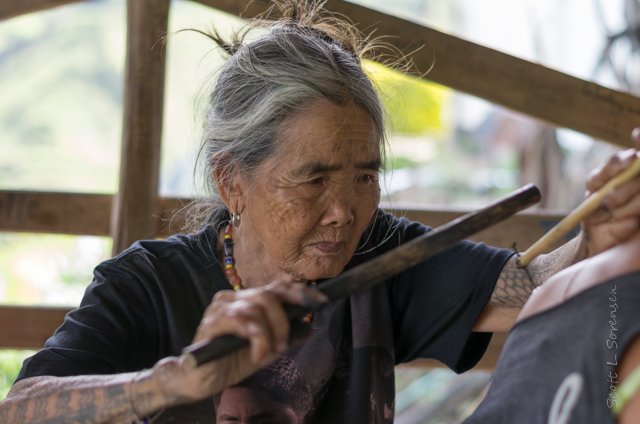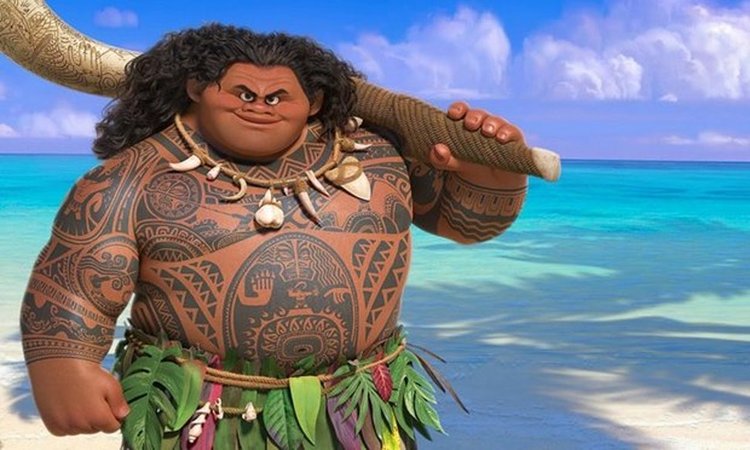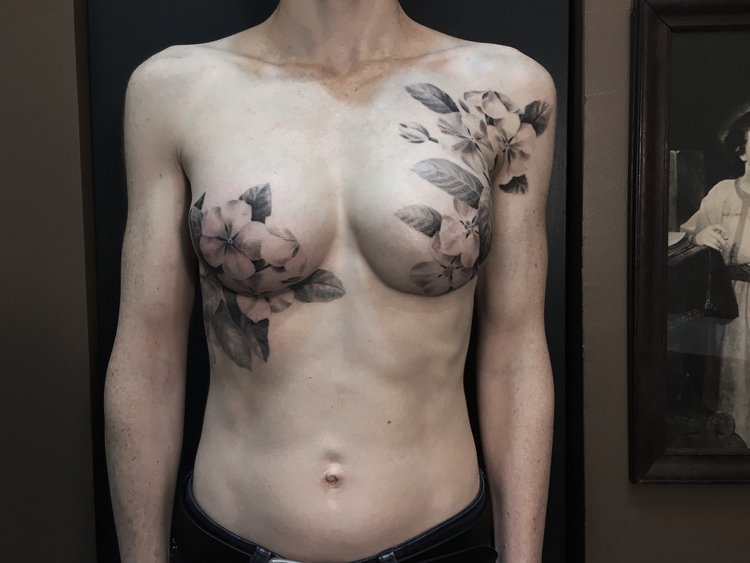Photo by Ahmed Carter on Unsplash What is the longest surviving form of art? Music styles come and go, cave carvings have morphed into the street art, and cinema is merely 140 years old. But there’s one ancient art form, which developed independently in many different parts of the world in pre-historic times and turned into a multi-billion industry by the XXI century, while still upholding its traditions. It’s the art of tattooing. Tattooing is a rather unique, one of a kind form of art that, according to some sources, can be traced all the way back to the Neolithic period, which makes inking at least 12,000 years old. It’s a universal art form that independently existed in virtually every single ancient civilization around the globe. Evidently, humans everywhere have always shared this desire to create a temporary mark commemorating an important event and, of course, be able to show it off. An ancient Egyptian mummy, which is estimated to be over 5,000 years old and is on display at the British Museum sports images of a Barbary sheep and a bull on its upper right arm. Those are clearly the markings of an elite Egyptian hunter, as killing or even trapping a Barbary sheep, considering their speed and climbing abilities, was by no means an easy feat when your only weapon is a predynastic bow and arrow. Whang-od tattooing/ Wikimedia Commons Tattooing is a painful ritual, which in itself already makes the person undergoing it a part of a club. For a long while, tattoos of ancient peoples mainly represented coming of age, their membership to a particular group, their spiritual power or a regal status. The images were always inspired by their immediate environment and were engraved under the skin with primitive tools like thorns and pieces of bone. Those tools, as well as the ink, were a part of the environment too, making the process even more spiritually important. In Samoan language, the word Tatau literarily means ‘to strike’, which refers to the gentle strokes of a wooden tool used to insert pigment under the skin. Traditionally, Samoan men and women covered their bodies from the waist down to their knees with symmetrical patterns, depicting animals like seagulls and centipedes, which represented the unified strength of the tribe. Tattooing was also a right of passage, as the process was extremely painful and took a long time to complete. Samoans referred to their untattooed tribesmen as ‘naked’. Those who started the tattoo ordeal but couldn’t go through with it were left with unfinished pieces – a mark of shame. Samoan tattooing, along with similar Polynesian traditions have developed uninterrupted for centuries until Captain James Cook arrived at Tahiti in 1769. In his journal, Cook described what the locals called Tattow, the word that later on spread across the globe. Waves of colonizers that came after Cook took control of the islands and banned indigenous people from making tattoos, effectively stripping them of their identities and destroying their cultures, making the colonization process all that easier. Still from the animated film Moana/Walt Disney Studios Motion Pictures At that time, Europeans haven’t seen tattoos for a couple of thousand years, but that doesn’t mean the art was never practiced there. Ötzi the Iceman, a 5,300-year-old mummy discovered in Northern Italy has at least 61 tattoos. Europe saw the end of its tattoo culture with the introduction and spread of Abrahamic religions, all of which deemed tattoos a desecration of the body and relics of paganism. Leviticus 19:28 – You shall not make any cuttings in your flesh for the dead, nor print any marks on you: I am the LORD. Having been pushed into the underground, tattoos were embraced by those that inhabited it. A lot of criminals, outcasts, and freaks covered their bodies freely and happily, while others were forced to wear tattoos. In many different territories around the world, forcibly made face tattoos would signal that a person committed a crime or was a runaway slave. During the Atlantic Slave trade, tribe members being shipped off to foreign lands had their faces forcibly marked to identify them in case they would escape or freed. This ghastly tradition survived to this day – tattoos serve as a painful reminder for ex-prisoners of Auschwitz, while modern-day sex traffickers and pimps would often tattoo their names across their victim’s chests. In 1981 the first tattoo-machine was patented, which basically kick-started the tattoo industry – from now on people could get large portions of their bodies covered very quickly. In the U.S. tattoos were already popular among sailors at the time, many of whom went on getting more and more, aiming to become a tattoo-attraction in a traveling circus. Still, tattoos were heavily associated with dangerous people who were apart from the society: prisoners, gang members, bikers and so on. It all started to change in the 1970s when tattoos began to appear in glossy magazines. In 1972, Life magazine ran an article titled ‘The ancient art of tattooing comes back into fashion’. Then, in 1981 MTV was born. The channel had a huge impact on many different industries, but it also managed to completely change the idea of an average person with tattoos. They weren’t marginals anymore, they were rock stars. Then, in 2010 Instagram came out, which was arguably one of the most important events in the history of the tattoo industry. Since then, in the U.S. alone the number of tattooed people almost tripled. It also increased the competition, effectively forcing artists to improve and innovate at an unparalleled rate. These days tattoos can be seen on a plethora of artists, musicians, actors and even elected officials – Canadian Prime Minister Justin Trudeau has been photographed sporting one on his shoulder. While in most western countries, tattoos aren’t associated with gangs and criminals anymore, the situation is slightly different in other places. For instance, young men in the United Arab Emirates can’t join the army if they have tattoos, 50% of public pools and spas in Japan are likely to refuse entry to people with ink, while in China tattoos are not allowed on TV. Still, this didn’t prevent the Chinese tattoo industry to grow by 390% in 2015. It’s estimated that the global tattoo industry is worth over $60 billion, and it’s growing by double digits every single year. This is largely attributed not only to the ever-increasing popularity of tattoos but also to the fact that millennials, who are driving the trend, prefer expensive custom work over cheaper images from catalogues. Moreover, those who got at least one tattoo done are very likely to come back for another one. Nora Ink, a Tattoo Artist from Sashatattoing studio, one of the leading tattoo studios in Moscow commented on the industry’s uprise: “I’ve been in the tattooing business for about 10 years now and seen the industry go through various stages: from new styles emerging to new artists rising to prominence. I think the industry made its ultimate breakthrough some 5 years ago when Instagram was booming: tattoo designers started looking for inspiration in the works of various artists. Today the competition is very intense: tattoo artists create state-of-the-art designs for every new client.” View this post on Instagram Details👌🏻on my one of the best customer #nora_ink#sashatattooingstudios#art#tattoo#watercolortattoo#peonytattoo Clearly, the industry is booming, but what’s interesting is the fact that a sizeable chunk of those $60 million comes from tattoo removals. In 2016, the worldwide tattoo removal market was worth over $11 billion and it’s projected to hit $27 million by 2023. Somewhat unsurprisingly, it’s India, Japan, and the U.S. who are leading the pack here. According to Michaelle Fiore, a Tattoo Artist from Brooklyn, NY who tattoos out of NY Heart and Dagger, advances in tattoo removal is one of the biggest emerging trends seen in the industry. “Tattoo removal has gotten significantly more advanced in the past few years and sees no means of slowing down. They’ve really gotten it down to a science and have lasers that target different pigments and breaks them down to ultimately lighten the prior tattoo enough for a cover-up or to be gone forever. This opens up the door to a whole new market of possible clients as the fear of a permanent regret no longer exists. You see more people getting tattoos as a result of removal being an option. This also makes the consumer aware of quality, doing their research on artists prior and not skimping on costs because laser does cost more and is usually multiple sessions and more painful than getting a tattoo. It will be great to see the future of both industries coexist and progress!” It’s virtually impossible to pinpoint the most popular styles of tattoos these days – it can be anything from pictures of loved ones done in realism or an exact copy of ancient Samoan tattoos done in the same technique. There are even tattoo collectors who view their tattoos not as just individual pieces but rather curated collections done by different artists in as many different styles as possible. These days, the tattoo industry is extremely well-represented with tattoo conventions happening in almost every major city on earth. There are photo books, magazines, websites, YouTube channels, documentaries, articles and installations covering or showcasing the culture. In the last couple of years even face tattoos became more or less acceptable ‘thanks’ to a plethora of so-called mumble-rappers. All of this exposure ramps up the competition, artists are constantly looking for ways of doing something new, which leads to an enormous influx of specialized products entering the market. People are making fortunes off tattoo machines, ink, stencils and even bespoke chairs designed specifically for tattooing. But it doesn’t stop there – lately tattoos have become a tool for fixing consequences of operations and past mistakes. One of the recently emerged trends which will surely only become more widespread is empowering survivors of breast cancer. Women all over the world cover their scars with beautiful tattoos both as a statement of their strength and as a sign of moving on. David Allen is an established tattoo artist who helps women “to reclaim their beauty”: http://www.allentattoo.com/ As tattoos are becoming more aesthetically pleasing and more widely accepted, coverups, in general, are becoming a trend of their own. For many tattoo artists, covering bad tattoos with bigger and better designs is almost morphing into a separate industry. There’s even a dedicated show on British television appropriately named Tattoo Fixers. The owner of Southside Tattoo in Baltimore Dave Cutlipmade covering up gang-related and racist tattoos a policy: “In some of the tattoos that I’ve seen, we’re talking crazy swastikas and portraits, it’s going to take ten times more than $60,000 to help those people. I truly believe in my heart they wanted to change. I had one guy cry. He didn’t have a job, he was homeless and I made sure that he was taken care of, I believed in him.” A lot of new styles emerged in the last couple of decades. Traditional sailors’ old school tattoos made way for more colorful, diverse and somewhat frivolous new school. Traditional tribal tattoos can now be done in color with never before seen patterns, while classic Japanese tattoos are tinted with western influence. And then there’s realism. Tattoos of your relatives and loved ones, movie characters, musicians, your spirit animals or favorite landmarks are basically photographs embedded under your skin now. Dialled up to the extreme, realism morphs into biomechanics – a distinctive style that can make you look like a cyborg with erringly realistic mechanical parts tearing up your skin from within. View this post on Instagram Super super super winzig und detailliert 😍😍😍 Tätowiert von @leoacostattoo . . . @tattoorealistic @inkmachines @tattooloveart #intenzepride @tattooselection @tattoo.artists @ink.life @the.best.tattoo.page @tadoodo @tatowiermagazin @radtattoos @_winkt @tatouages_et_citations @blackworkers @tattoopontocom @artistasdeltatuaje inkterminal @skinart_mag @tattoos_and_tattoo_arts @thebesttattooartists @hiendtattoos @tattoos_of_instagram @sullenclothing @the_world_of_laeti @wirliebentattoos #tattoo #tattoos #tattoed #tattooink #tattoocommunity #skinart #tattoorealism #tattooidea #tattooinspiration #tattoolife #tattoowork #tattoolover #ink #inked #tattoorealistic #realismtattoo #toptattooartist #thebesttattooartist #tattooartists #inkstagram #inklife #inkedup #neuestattoo #besttattoo #berlintattoo Perhaps the most impressive thing about the art of tattooing is the fact that new styles never replace traditional ones. A lot of artists make a point of sticking to their roots, working with centuries-old hand-poking devices and upholding the traditions. The past, the present and the future coexist and morph together within the tattoo industry, and that’s what makes it so unique. The future of the tattoo industry can be summarised in just one word: more. More styles, more fusion, more artistry, more recognition, more money. For the bigger part of its history tattoos were a mark of society drop-outs, but this trend is reversing now. Tattoos are quickly becoming a way for a lot of people to become a functioning part of society again. Cultures that have historically frowned upon tattoos are changing their perception at an incredible rate. Just 10 years ago, tattoos in Russia were exclusively associated with prison – even people with artful ink on their bodies would often be asked questions like ‘which prison were you at?’, but the situation changed drastically as more and more people started getting high-quality pieces. As for the emerging styles, there’s a lot to choose from. Watercolor tattoos have made a big impact in the last couple of years, becoming known as one of the most aesthetically pleasing styles. Tattoo artists put a lot of hours making their pieces look more like paintings, with vivid colors and almost no black outlines. As ink is getting brighter and tattoo machines are getting better, it will be interesting to see how this style evolves in the near future. The complete opposite of watercolor tattoos is blackwork. It can range from small shapes like black squares probably inspired by the famous painting to entire bodysuits of black ink, where thin and intricate lines of blank skin form a pattern. But blackwork isn’t as simple as it looks – it can be further modified with scarification, white ink on top of black or even a second layer of thick black strokes, a technique called ‘blastover’. Abstract tattoo styles like trash polka, which is a rather difficult one to explain, will only be getting more creative, pushing the boundaries of what the human body can accommodate. Speaking of trash and things that are hard to explain, bad and cheap tattoos are also making a huge comeback, only this time it is intentional, sort of a counter-culture statement. An Instagram account @snake___pit has a carefully curated collection, view at your own discretion. Don’t say we didn’t warn you. View this post on Instagram Obrigado a todos mesmo de verdade vcs são foda, sem a ajuda de todos vcs não teria conseguido, tatuagem no estilo Trash Polka, no tema do Nikola Tesla, um dos meus cientistas favoritos, premiada em primeiro lugar #trashpolka #trash #trashpolkatattoo #tatuagem #tattoo #tattoos #tatuagemtrashpolka #piracicabatattoofest #nikolatesla #nikolateslatattoo #nikolateslatattoos #engenhariaeletrica #tattoonikolatesla @piracicabatattoofest #tattoopremiada #trashpolkabrasil #pretoevermelho Technology is also making its way into the tattoo industry. Glow-in-the-dark tattoos are a thing of the past now, augmented reality compatible ink which can come to life on your smartphone’s screen is already here, but there’s a lot more to come. A team of French design students redesigned a 3D printer by replacing its resin extruder with a tattoo needle and the result was rather fascinating – a perfect circle tattooed on the team member’s arm in a matter of seconds. Here’s where the future gets really exciting. A team of researchers at the University of Minnesota created a 3D-printing technique which can ‘tattoo’ conductive silver flakes that contain ink onto skin. The so-called electronic tattoo can be peeled off when no longer needed. The team believes that the technology can be used for new groundbreaking treatment methods for injuries and skin grafts, even going as far as envisioning a soldier on a battlefield pulling out a 3D printer from his backpack and printing a chemical sensor directly on his skin. This is why tattoos are so fascinating. A painful ritual, a right of passage, a way of identification and a commemoration of important life events that is just as old as first civilizations. These days, the world’s oldest art form is changing people’s lives for the better and inspires new, potentially groundbreaking technologies. Clearly, tattoos have a tendency of sticking around, both on an individual’s body and in humanity’s history.
The past


The present

The future

